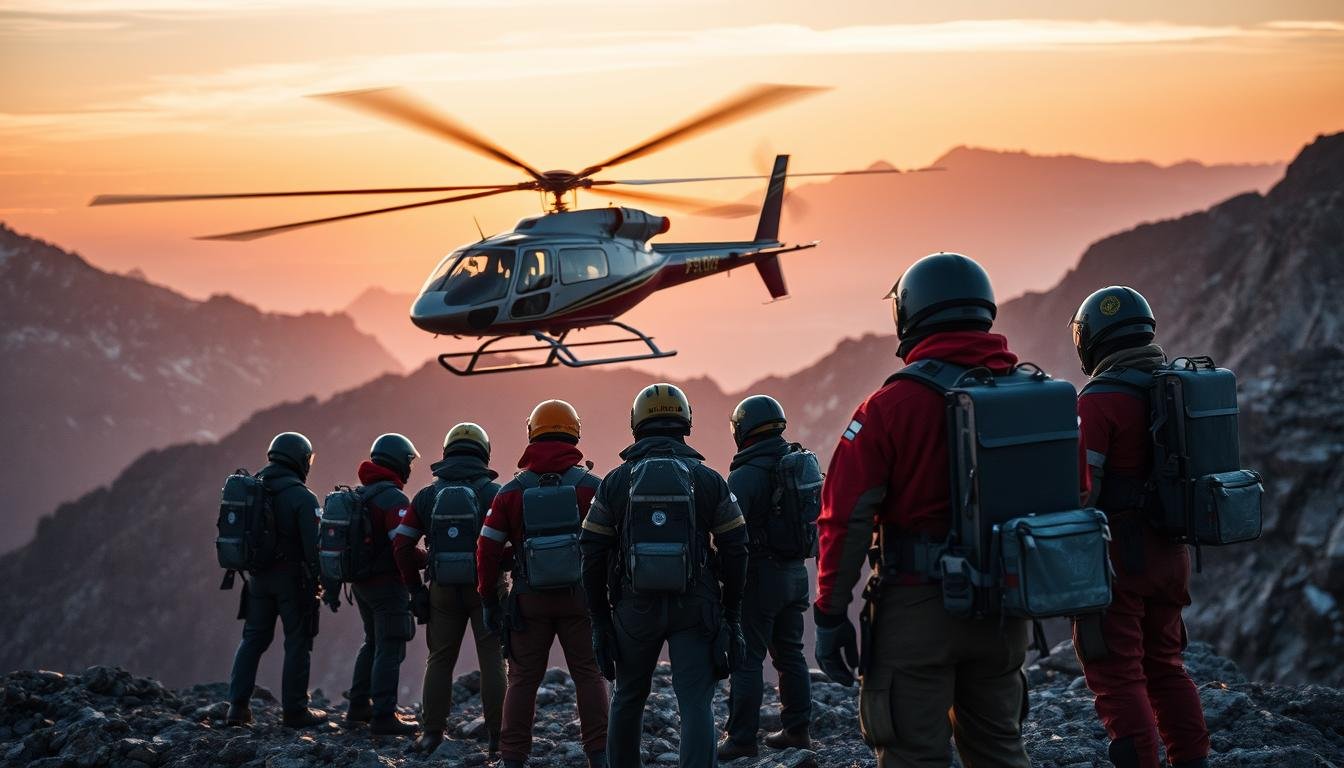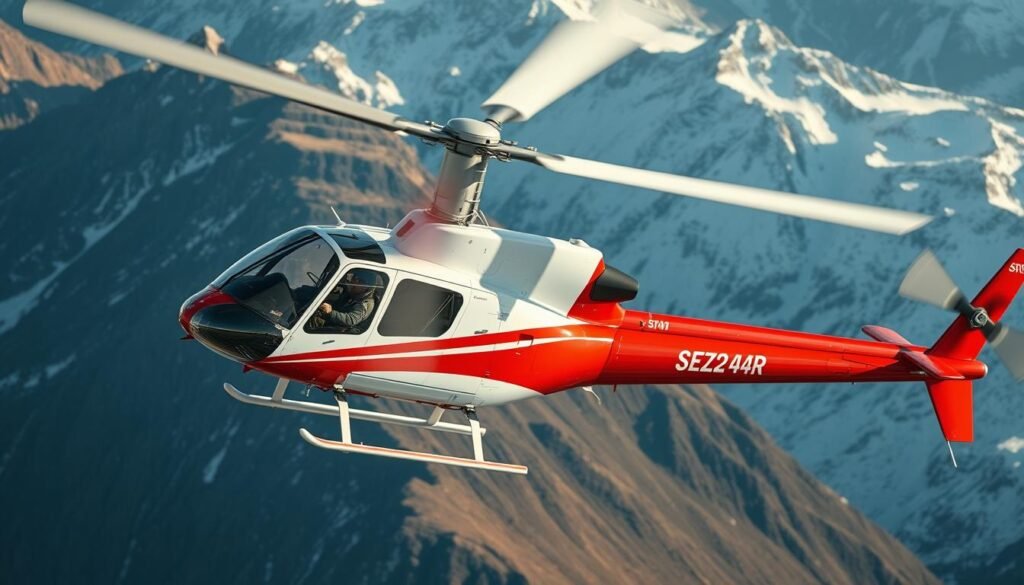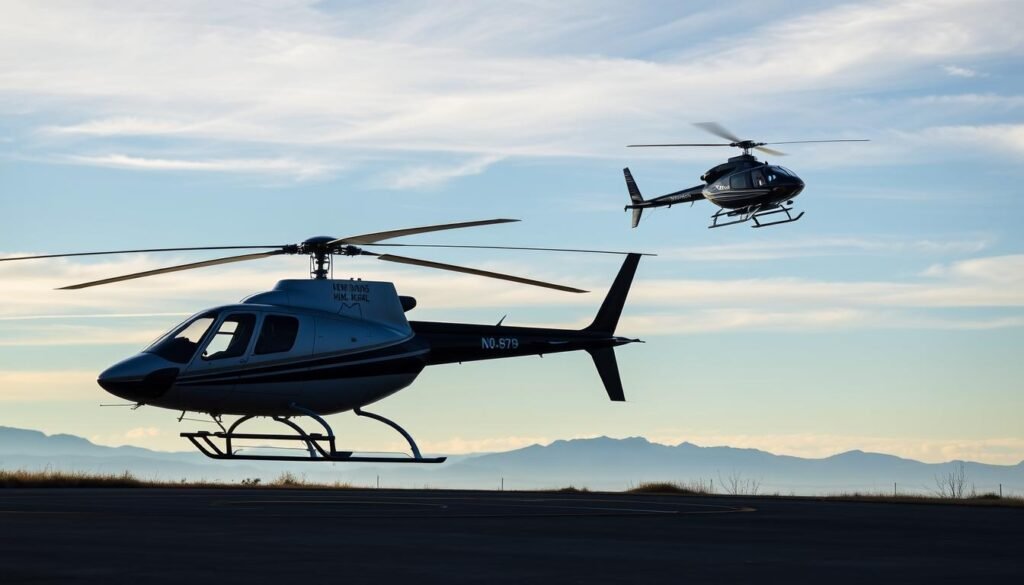One in four mission-ready crews report that hiring standards now include measurable competency checks beyond flight hours. This striking stat shows how the field measures candidates against real operations, safety culture, and mission tempo.
The guide frames how organizations weigh training records, instrument proficiency, hoist familiarity, and multi-crew coordination when building teams.
It explains why hours by aircraft type, recency, mission mix—offshore, mountain, urban, night—and adherence to SOPs make a competitive profile.
Readers will learn how to present information in resumes, digital profiles, and logbooks to match screening and line-check expectations.
The section also previews hiring variations across public agencies, private contractors, hospitals, and energy clients while tying all criteria back to safety and compliance.
Key Takeaways
- Hiring now focuses on measurable competencies tied to real-world operations.
- Detailed logbooks and recent hours by aircraft type matter.
- Core skills include instrument work, hoist use, and survival knowledge.
- Communication, CRM, and interagency coordination are evaluated.
- Different sectors share safety standards but vary hiring pipelines.
Understanding The Helicopter Search And Rescue Career Landscape
Who hires aircrew varies across the United States. State and municipal agencies, federal units, hospital-based programs, offshore energy contractors, and specialist firms each run distinct operations.
Public-sector roles often offer steady schedules, defined benefits, and regional bases. Private providers may pay more but ask for higher availability, multi-engine experience, and NVG or offshore survival credentials.
Regulations, client contracts, and insurance rules set minimum qualifications. Employers look at total flight time, recency on type, mission-relevant training, and documented emergency procedures.
| Employer Type | Typical Duty Cycle | Key Qualifications | Common Advancement |
|---|---|---|---|
| Municipal / State | Shift-based; seasonal peaks | Instrument currency; hoist training | Base pilot → flight lead |
| Private / Offshore | On-call rotations; extended deployments | Multi-engine turbine; NVG; survival | Specialist roles; program manager |
| Hospital / HEMS | Rapid response; medical integration | Patient transport procedures; CRM | HEMS pilot → chief pilot |
Career growth comes from role specialization and broadening assignments across mountain, maritime, and urban missions. Aging crews, fleet renewal, and new tech shape hiring trends and future opportunity in the aviation world.
Core Skills And Competencies Employers Prioritize
Top operators screen candidates by combining systems knowledge, scenario judgment, and hands-on mission skills.

Technical Aviation Skills And Aircraft Systems Proficiency
Recruiters verify type ratings, turbine time, and endorsements. They expect clear descriptions of AFCS, FMS, HTAWS, radar altimeters, and NVG integration.
Pilots must articulate system limits and abnormal procedures confidently. Demonstrated instrument work and logs that show recent currency help during interviews.
Flight Operations Judgment, Risk Management, And CRM
Scenario interviews and simulator profiles probe weather decisions, fuel strategy, and performance math like OGE/IGE hover margins.
Teams look for repeatable risk processes: pre-mission matrices, threat-and-error checks, sterile cockpit habits, and concise callouts. These traits show robust decision-making under pressure.
Rescue Techniques, Hoist Operations, And Patient Transport Support
Competence covers hoist use, sling awareness, overwater hover discipline, and safe patient handling. Applicants explain cold-load and hot-load protocols and LZ security steps.
Strong candidates link measured outcomes—better hover accuracy or fewer inadvertent IMC events—to training records and instructor notes. That evidence advances a long-term career and shows lasting commitment.
Training, Certifications, And Medical Fitness Requirements
Consistent recurrent training and verified proficiency determine readiness for high-risk missions. Candidates should show a compact package of FAA licenses, instrument ratings, and mission-focused program completions that match operational needs.

FAA Licenses, Instrument Ratings, And SAR-Specific Programs
Typical expectations include a commercial helicopter certificate, an instrument rating, and night or NVG endorsements where required. Operators favor documented flight proficiency and recent hours that mirror their mission mix.
Mission-focused programs such as hoist operations, HUET/overwater, mountain flying, and CRM standardization set candidates apart. Recurrent cycles often run annually or semiannually with simulator sessions, line checks, and emergency evaluations.
Medical Standards, Physical Conditioning, And Water Survival
Applicants must maintain FAA medical certification and show aerobic fitness for stretcher handling and confined-space work. Strength, endurance, and clear medical records are routinely verified during hiring.
Water survival proficiency—HUET, raft deployment, hypothermia response, signaling, and PPE use—is essential for offshore missions. Candidates should curate training logs to highlight diverse scenarios like shipboard approaches and inadvertent IFR recoveries.
| Requirement | Typical Standard | Frequency | Why It Matters |
|---|---|---|---|
| Commercial Certificate | Valid FAA credential | Continuous | Minimum legal qualification to operate in paid roles |
| Recurrent Simulator/Line Check | Annual or Semiannual | Per operator policy | Verifies emergency responses and CRM skills |
| Medical & Fitness | FAA medical; aerobic/strength tests | Annual or as required | Ensures duty readiness and safety |
Practical Checklist: Book recurrent training early, align medical renewals with check rides, keep logbooks current, and pre-stage proof of program completions for application packets.
Operational Environments And Mission Demands In SAR
Mission success depends on tailoring checklists, briefings, and equipment to the environment at hand.

Offshore, Mountain, Urban, And Night Operations Considerations
Offshore missions require precise shipboard approach procedures, deck-motion assessment, and overwater contingencies. Operators expect HTAWS use, radar altimeter callouts, and liferaft and PLB integration for crew support.
Mountain work demands power-management mastery, density altitude math, and ridge-line techniques. Pilots must plan performance margins and adapt approach profiles for pinnacles and confined slopes.
Urban operations impose tight-spot landing discipline, rooftop awareness, and wire reconnaissance. Teams coordinate with local fire and law enforcement to secure LZs and flight corridors.
Night flights call for NVG currency, correct lighting setups, and strict task shedding. Crews use stabilized approach criteria and rigorous instrument cross-checks to offset limited visual cues.
- Adjust SOPs for icing, maritime systems, and mountain turbulence.
- Review go/no-go case studies to show methodical risk mitigation.
- Stage rescue swimmers, medics, and weight-and-balance plans for patient transport.
- Pre-check night kits, survival gear, and mission-specific equipment before briefings.
| Environment | Key Demands | Typical Crew Focus |
|---|---|---|
| Offshore | Deck motion, overwater contingency, HTAWS | Shipboard approaches, liferaft readiness |
| Mountain | Density altitude, terrain profiling, power margins | Pinnacle techniques, performance planning |
| Urban | Confined-area landing, obstacle reconnaissance | LZ coordination with public safety |
| Night | NVG ops, lighting configs, instrument cross-checks | Stabilized approaches, crew task discipline |
Practical readiness: crews should stage equipment for rapid response, confirm survival gear, and validate performance planning during the briefing.
For deeper coverage of maritime mission standards and medevac support, consult this offshore operations overview.
Helicopter Search And Rescue Jobs: What Employers Look For
Applications succeed when candidates present concise, mission-focused records that mirror an operator’s operational profile.

How To Apply: Targeted Resumes, Logbooks, And Employment Documentation
Candidates should tailor resumes to specific positions, front-loading mission-relevant flight time, NVG currency, hoist experience, and instrument proficiency. Organized logbooks must match electronic summaries and operator minimums.
Application packets should include licenses, medical, recurrent training certificates, program completions, and verifiable references. Clear totals and scanned proof speed background checks.
Assessment And Training Pipelines: Simulator, Check Rides, And SOPs
The assessment pipeline usually starts with a screening interview. Next come simulator evaluations of judgment, emergency flows, and instrument work.
Successful candidates then complete standardization check rides to validate adherence to published SOPs and line-oriented procedures.
Behavioral Interviews: Commitment, Teamwork, And Safety Mindset
Behavioral panels probe commitment to safety and teamwork. Strong applicants use STAR-format answers to show decisions, briefings, and measurable safety gains.
Interview prep should include abnormal callouts, immediate actions, and flows aligned to the target operator’s aircraft family. Salary talks should cite market data and documented value such as instructor or safety duties.
| Stage | Focus | What To Present | Outcome |
|---|---|---|---|
| Application | Documentation | Logbook summary, licenses, medical | Screening pass |
| Simulator | Judgment & Procedures | Emergency flows, IFR handling | Invite to check ride |
| Check Ride | SOP Adherence | Line-oriented flight demo | Qualification |
| Behavioral | Culture Fit | STAR examples showing commitment | Final offer or placement |
Tip: Review a focused pilot interview guide before panel interviews.
Salary, Benefits, And Career Progression In U.S. SAR Operations
The total salary package depends heavily on operator type, aircraft class, mission complexity, and base location. Shift structure, call-out duty, and frequent weather-driven missions can boost overtime and hazard pay.
A typical package goes beyond base pay. Items often include overtime rules, per diem, housing or relocation support, retention bonuses, medical benefits, 401(k) matching, and paid training allocations tied to operations needs.
High-demand skills—NVG instructor, hoist-qualified captain, or marine ops specialist—command stronger offers. Candidates should present documented proficiency and recent flight metrics to justify higher pay.
| Operator Type | Common Extras | Progression Path |
|---|---|---|
| Public | Pension; stable schedules; limited overtime | SIC → PIC → Chief Pilot |
| Private | Higher base, retention bonuses, paid training | PIC → Check Airman → Training Captain |
| Hospital | Shift differentials; medical benefits | Flight Lead → Program Manager |
Negotiation should be timed and transparent. Present verifiable hours, mission breadth, and certifications while acknowledging operator constraints and compliance pay scales.
Career planning includes targeted training, relocation flexibility, and networking with chief pilots to stay visible for openings. For public-safety career paths, see this law enforcement pilot careers guide.
Equal Employment Opportunity And Inclusive Hiring In The SAR Industry
A formal commitment to equity helps operators attract diverse talent into high-pressure operational roles. Clear non-discrimination language — like Bristow Group’s policy that forbids bias based on race, sex, color, religion, gender, sexual orientation, gender identity or expression, national origin, age, genetic information, disability, or veteran status — sets a baseline for fair hiring.

Non-Discrimination Standards Covering Race, Gender, Age, Disability, And Veteran Status
Such statements translate into practical steps across recruiting, screening, assessment, and promotion. They ensure positions are awarded on verified competence, documented metrics, and mission readiness.
Best Practices For Operators To Ensure Equitable Careers And Opportunities
Operators should standardize interviews, use job-relevant work samples, and document scoring rubrics to reduce bias. Accessible application portals and reasonable accommodations during assessments widen the candidate pool.
- Outreach to veteran groups and underrepresented communities to expand services talent pipelines.
- Audit pay and promotion decisions and track interview-to-offer ratios.
- Provide anti-bias and bystander-intervention training for line leaders and integrate inclusive language in SOPs.
Candidates should know their rights, ask for accommodations when needed, and present clear, evidentiary records so selection focuses on capability and mission fit. Diverse crews improve communication, risk perception, and problem solving — directly benefiting safety and service quality.
Final Thoughts
Employers place top value on verifiable mission skills, clear decision-making, and recent, role-specific program completions. Candidates should present concise records that tie technical proficiency to measurable outcomes in flight scenarios and mission work.
Core hiring pillars include systems skill, CRM maturity, rescue and transport integration, and a safety-first mindset. Maintain a steady training cadence, curate certificates that match the mission, and quantify achievements so a new team gains value on day one.
Thoughtful career planning—targeting bases, building mentorships, and practicing scenario evidence before interviews—opens opportunity and raises salary prospects. For a practical market view and benchmarking, see this pilot job market overview.
FAQ
What certifications are essential to qualify for SAR pilot positions?
Candidates must hold an FAA commercial pilot certificate and often an instrument rating. Employers value additional type ratings and completion of SAR-specific programs offered by organizations like the Airborne Law Enforcement Association or military transition courses. Up-to-date logbooks that show relevant mission hours and recurrent training records are required.
Which practical skills do operators prioritize during recruitment?
Recruiters look for strong aircraft systems knowledge, precision in hoist and litter operations, and proven capability in confined-area landings. Proficiency with avionics, night vision devices, and mission planning software improves candidacy. Demonstrated crew resource management and clear radio communications are also critical.
How important is recent mission experience and logging?
Recent, relevant flight time weighs heavily. Employers prefer applicants who document offshore, mountain, or urban SAR sorties and show exposure to night operations. Detailed logbook entries that confirm roles, conditions, and responsibilities help hiring managers assess readiness.
What medical and fitness standards must applicants meet?
Applicants must meet FAA medical class requirements, often a second-class or first-class certificate depending on role. Additional operator standards can include physical fitness tests, swimming and water survival proficiency, and the ability to perform patient handling without limitations.
How do employers evaluate behavioral fit during interviews?
Interviews focus on teamwork, decision-making under pressure, and commitment to safety culture. Expect scenario questions about risk assessment, crew coordination, and mission debriefing. Strong answers reference concrete incidents, lessons learned, and adherence to standard operating procedures.
What does the assessment pipeline typically involve?
Candidates usually pass simulator evaluations, proficiency checks, and check rides with designated examiners. Some operators include practical hoist assessments, confined-area approaches, and multi-crew exercises. Successful applicants receive a training package outlining recurrent syllabi and mentorship plans.
How should applicants prepare their application materials?
Prepare a targeted resume highlighting SAR-relevant flight hours, types of missions, and technical skills. Include scanned logbook summaries, certificates, and letters of recommendation from previous operators or military units. Tailor the cover letter to the operator’s mission profile and capability needs.
What salary and benefits can professionals expect in U.S. SAR roles?
Compensation varies by operator, region, and experience. Public-sector roles with agencies like the U.S. Coast Guard have structured pay scales and benefits, while private operators may offer competitive packages including hazard pay, health insurance, retirement plans, and training stipends. Career progression often leads to instructor, operations manager, or safety officer positions.
How do operators ensure inclusive hiring practices?
Reputable organizations follow non-discrimination policies covering race, gender, age, disability status, and veteran preference. Best practices include standardized assessment criteria, accessible recruitment materials, and bias-aware interview panels. Many operators partner with organizations such as Veterans Affairs or regional aviation academies to broaden the talent pool.
What environments should applicants be ready to operate in?
Applicants must be prepared for offshore resupply and medevac, alpine and rocky terrain operations, urban extractions, and degraded-visibility night missions. Adaptability to weather extremes, variable landing zones, and multi-agency coordination is essential for mission success.
lti-agency coordination is essential for mission success.



